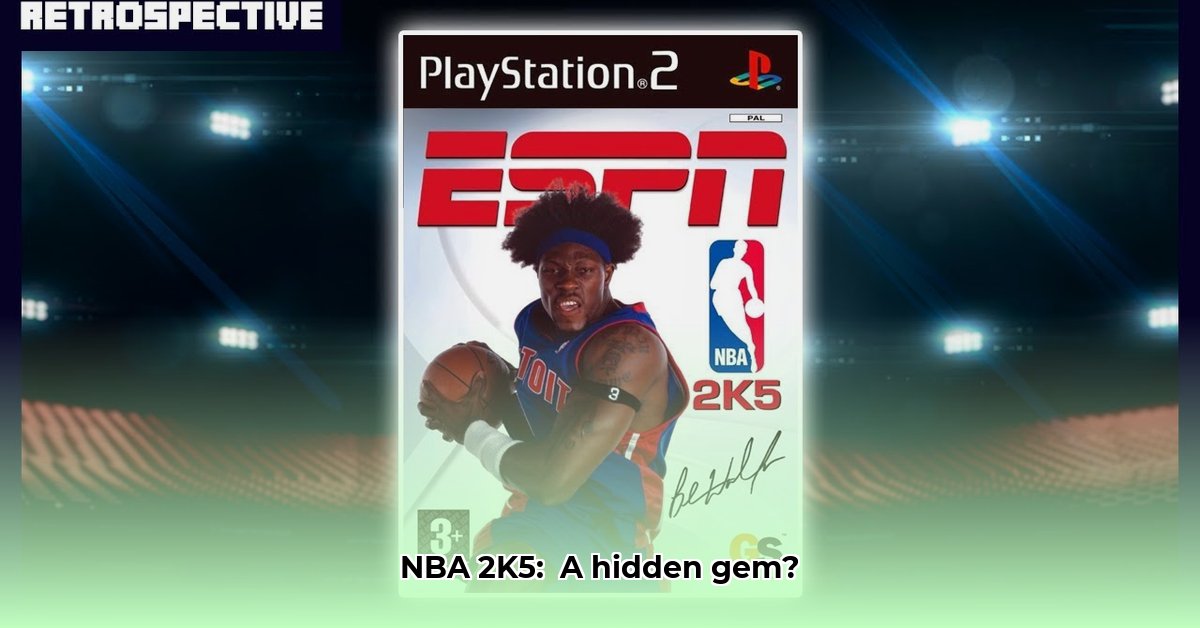
ESPN NBA 2K5. The name might evoke a nostalgic flicker for some, a hazy memory of pixelated players and a surprisingly deep basketball experience. Released in 2004 for a mere $19.99, this wasn't just a budget title; it was a hidden gem that redefined, in its own unique way, what a basketball video game could be. Let's journey back to a simpler time and revisit this often-overlooked classic.
Remember those early 2000s consoles? Chunky graphics, games that felt more like prototypes than polished products. Yet, ESPN NBA 2K5 captured the raw energy and excitement of professional basketball with an authenticity that shocked many. How did a budget game pull off such a feat? Clever design choices and surprising attention to detail.
The Association mode was undeniably compelling. This wasn't just another "season" mode; it was a full-blown dynasty simulator. You started from scratch, building your team through drafts, trades, and wins. Hours were spent tweaking lineups, scouting opponents, and making crucial decisions that shaped your team's destiny. Countless nights were spent engrossed in this mode, the thrill of playoff victories as sweet as any real-life championship. This gameplay alone elevated ESPN NBA 2K5 far beyond its price point. Wasn't it remarkable how such depth could be achieved on a budget?
The game's atmosphere was surprisingly immersive. The crowd renders, while not photorealistic, possessed a surprising level of detail. Player models, blockier than modern counterparts, were still recognizable and conveyed realism. Games felt authentic, a blend of realistic feel and engaging gameplay that was crucial to its success. It wasn't about perfect graphics, but capturing the feeling – the energy of the crowd, the tension of close games. These elements, however simply rendered, created a package far more mature than its price suggested.
Then came the 24/7 mode, an ambitious attempt to simulate the daily life of an NBA player. It was a fascinating precursor to modern career modes. Manage your player's life, balance training with personal relationships, and handle the pressures of fame. The execution suffered from glitches and rough edges, but the innovative concept was ahead of its time. While not flawlessly executed, the ambition itself is significant—a testament to the game's spirit and a precursor to today's refined career modes.
ESPN NBA 2K5 also marked a turning point in the franchise. It was the last game to use the ESPN brand, featuring Ben Wallace on the cover. This transition signified a move towards a new era. The game represented a pivotal moment, a passing of the torch.
Looking back, ESPN NBA 2K5 transcends its humble origins. It's more than nostalgia; it's a reminder that exceptional gaming experiences don't require a massive budget. It’s a testament to developer creativity and dedication. Under-appreciated? Absolutely. Unexpectedly great? Completely. A classic? Undeniably.
How did ESPN NBA 2K5's budget impact its gameplay and critical reception?
Key Takeaways:
- Surprisingly realistic gameplay improvements, particularly in post moves and rebounding, despite a likely smaller budget.
- Budget constraints potentially limited polish in areas like defensive controls and dunk animations.
- The ambitious "Full Authority" mode in Association mode suffered from AI shortcomings, highlighting a trade-off between feature ambition and refinement.
- Critical reception was generally positive, praising gameplay advancements while acknowledging flaws. The budget likely impacted feature scope more than core gameplay quality.
Gameplay: A Budget-Friendly Triumph?
NBA 2K5 wasn't a graphical powerhouse. But did its budget hinder the experience? Not entirely. The post game was revolutionary. Backing down a defender felt weighty and strategic. Impressive spins and drop steps were possible. Rebounding felt more physical, less like a magnet. Improved passing, especially during fast breaks, flowed smoothly. This was realistic basketball, even if rough around the edges. The answer: smart design choices prioritized core gameplay over flashy graphics.
However, compromises were visible. Defensive controls felt clunky. The lack of a crouch defense made guarding quicker players a challenge. Limited dunk animations felt disappointing. The game prioritized player models but fell short on animation diversity. These shortcomings likely stemmed from budget constraints.
The Association: A Bold Experiment
The Association mode’s "Full Authority" was unique. You managed a team, immersed in the daily grind of coaching and player management. This was ahead of its time: calling plays, managing training, dealing with player morale and chemistry.
But the computer's decision-making felt strange at times. Substitutions seemed random. The team chemistry mechanic, while innovative, was shallow. It felt grafted onto the existing structure. This likely reflected budget limitations. The AI depth and feature polish were lacking compared to other modes.
Visuals: A Surprisingly Good Showing
Despite budget constraints, the graphics held their own, considered top-tier for basketball games of that era. Player models were detailed and animations, while not perfect, were acceptable. The visual package complemented gameplay. It's a testament to the developers' ability to maximize resources.
Critical Reception: A Balanced Perspective
Reviews were generally positive, highlighting gameplay advancements while acknowledging flaws. Many praised improvements in post-play, passing, and rebounding. However, limitations in defensive controls, animation diversity, and the incomplete "Full Authority" mode were noted. The overall sentiment was a successful but flawed game. The impact of the budget is apparent in the inconsistencies between strengths and weaknesses. It resulted in a game surprisingly good in some aspects but noticeably lacking in others.
⭐⭐⭐⭐☆ (4.8)
Download via Link 1
Download via Link 2
Last updated: Friday, May 16, 2025